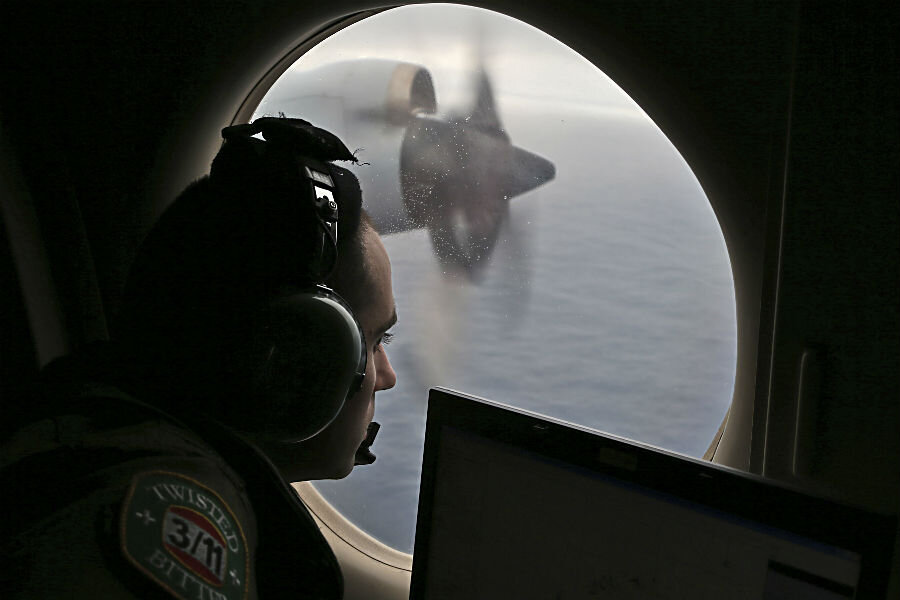A new plan for how to track missing airliners
Loading...
On Wednesday, a United Nations conference unveiled a plan to use part of the radio spectrum as a global flight tracking system in an effort to prevent planes from disappearing from the skies apparently without a trace.
Citing the still-unexplained disappearance of Malaysian Airlines Flight MH370, which went missing in March 2014, the UN’s World Radiocommunication Conference agreed to allow satellites to receive specialized transmissions that aircraft currently send to other planes and to ground stations.
The transmissions, known as automatic dependent surveillance-broadcast (ADS-B) will be transmitted to satellites, allowing real-time tracking of flights anywhere in the world, François Rancy, head of the U.N. International Telecommunication Union’s Radiocommunication Bureau said in a statement.
"This extends ADS-B signals beyond line-of-sight to facilitate reporting the position of aircraft equipped with ADS-B anywhere in the world, including oceanic, polar and other remote areas," the UN’s ITU said in a statement.
The UN’s approach marks a breakthrough because while most planes have some form of flight tracking, the features offered by such services can vary widely, with more tracking capabilities often coming at increased cost, USA Today reports.
ADS-B, by contrast, provides pilots with a three-dimensional view of their airspace, which was previously only available to air traffic controllers, Air and Space Magazine reports.
Most planes in the US use some version of a common system called ACARS, for Aircraft Communications Addressing and Reporting System. But the system can transmit different information between the plane and airlines and to manufacturers, who sometimes charge the airlines a fee to have access to the information.
Initially, airlines used flight tracking systems as cost-saving measures, John Hansman, director of the International Center for Air Transportation at Massachusetts Institute of Technology, told USA Today.
"The reason why people do this is because if something breaks in flight, if maintenance gets the message they can actually be at the landing point with the replacement part and fix the airplane and turn it around quickly," Mr. Hansman said.
But such systems can send different sorts of information between the plane and airlines and manufacturers on the ground. Depending on the sophistication of the information, the airline might receive the information itself or rely on the manufacturer to relay it for a fee.
In March, near the anniversary of MH370’s disappearance, Australia, Indonesia, and Malaysia unveiled a plan to use the tracking technology to monitor flights more frequently as they move through the air. Currently, there is no requirement for real-time tracking for commercial flights, reports NBC News.
Another, lower-cost solution are so-called “breadcrumb” trackers, which also transmit information such as an aircraft’s latitude, longitude, altitude, airspeed, and bearing to a series of satellites in two-minute intervals, according to Air and Space Magazine.
The devices send the information directly to computer servers owned by commercial companies, along with alerting a list of emergency contacts if something goes wrong or the device stops working.
Devices such as breadcrumb trackers are aimed at providing more accurate information to smaller pilots and helicopters than ADS-B, which costs as much as $12,000 for onboard controls, the magazine reports. But the FAA has said that despite their promise, breadcrumb trackers are not a substitute for traditional satellite-based technology like ADS-B.
Commercial flight-tracking options can vary widely. More sophisticated services, such as a one offered by Boeing, includes monitoring of a plane’s fuel use, flight controls, landing gear, hydraulic power and communications, USA Today reports.
Regulators and airlines were also criticized for not responding quickly to tracking recommendation from France after an Air France jet crashed in 2009. Malaysian Airlines hasn’t said what type of tracking system was used on MH370, but the plane was a similar model to the Air France Airbus jet that crashed, which had sophisticated tracking controls, according to USA Today.
In addition to Wednesday's announcement adopting ADS-B, the UN has also set a deadline of November 2016 to adopt new tracking guidelines , including requiring aircraft to send their positions at least every 15 minutes or more in an emergency.







